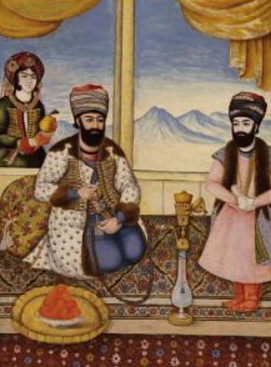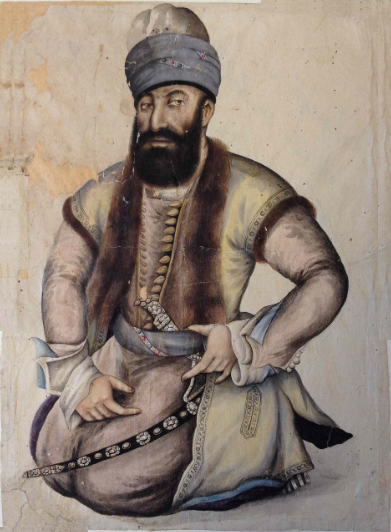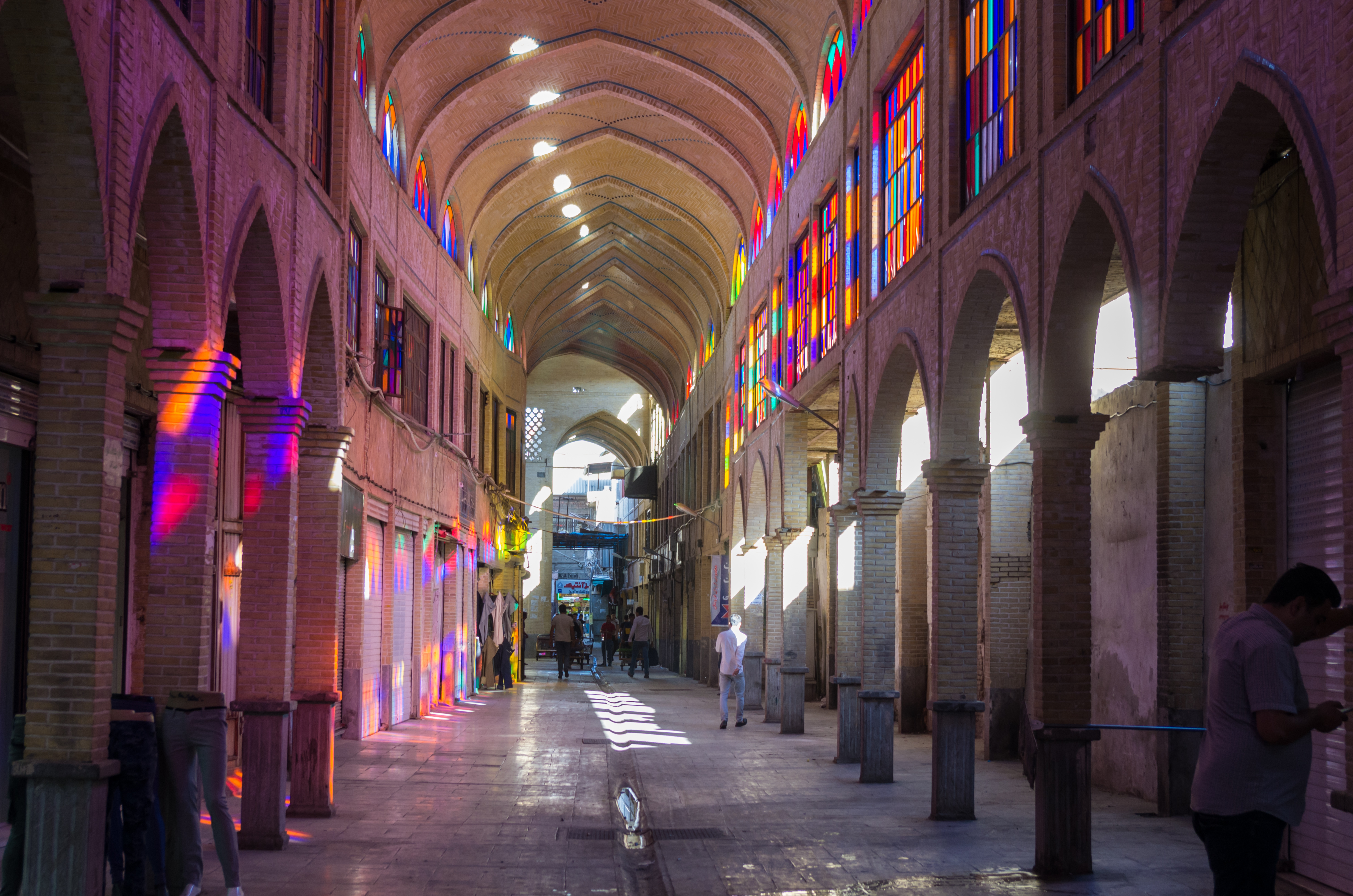|
Lotf Ali Khan
Lotf Ali Khan ( fa, لطفعلیخان زند; ) was the last Shah of the Zand dynasty. He ruled from 1789 to 1794. Early life Lotf Ali Khan Zand came to power after a decade of infighting among a succession of violent and inept Zand chiefs following the death in 1779 of the dynasty's founder, Karim Khan Zand. Their failure to agree on a successor and to govern with the same benevolence as Karim Khan eroded public faith in the Zands. An increasing number of local and regional leaders began aligning themselves with the eunuch Agha Mohammad Khan Qajar, who sought to defeat and succeed the Zands. The son of Jafar Khan, Lotf Ali Khan claimed the throne in 1789 upon the death of his father. Jafar Khan had been poisoned by a slave bribed by a rival family member, Sayed Morad Khan Zand. On hearing of his father's murder, Lotf Ali Khan marched to the Zand capital of Shiraz. Sayed Morad Khan was forced to surrender and was executed. Reign Soon after assuming his title, Lotf Ali K ... [...More Info...] [...Related Items...] OR: [Wikipedia] [Google] [Baidu] |
Shiraz
Shiraz (; fa, شیراز, Širâz ) is the List of largest cities of Iran, fifth-most-populous city of Iran and the capital of Fars province, Fars Province, which has been historically known as Pars (Sasanian province), Pars () and Persis. As of the 2016 national census, the population of the city was 1,565,572 people, and its built-up area with Sadra, Fars, Sadra was home to almost 1,800,000 inhabitants. A census in 2021 showed an increase in the city's population to 1,995,500 people. Shiraz is located in Southern Iran, southwestern Iran on the () seasonal river. Founded in the early Islamic period, the city has a moderate climate and has been a regional trade center for over a thousand years. The earliest reference to the city, as ''Tiraziš'', is on Elamite Clay tablet, clay tablets dated to 2000 BCE. The modern city was restored or founded by the Arabs, Arab Umayyad Caliphate in 693 CE and grew prominent under the successive Iranian peoples, Iranian Saffarid dynasty, Saffar ... [...More Info...] [...Related Items...] OR: [Wikipedia] [Google] [Baidu] |
List Of Kings Of Persia
This is a list of monarchs of Persia (or monarchs of the Iranic peoples, in present-day Iran), which are known by the royal title Shah or Shahanshah. This list starts from the establishment of the Medes around 671 BCE until the deposition of the Pahlavi dynasty in 1979 CE. Median Dynasty (671–549 BC) Teispid kingdom (705–559 BC) Achaemenid Empire (559–334/327 BC) ''Note: Ancient Persia is generally agreed to have ended with the collapse of the Achaemenid dynasty as a result of the Wars of Alexander the Great.'' Macedonian Empire (336–306 BC) Seleucid Empire (311–129 BC) Fratarakas The Fratarakas appear to have been Governors of the Seleucid Empire. Kings of Persis Parthian Empire (247 BC – 228 AD) The Seleucid dynasty gradually lost control of Persia. In 253, the Arsacid dynasty established itself in Parthia. The Parthians gradually expanded their control, until by the mid-2nd century BC, the Seleucids had completely lost control of ... [...More Info...] [...Related Items...] OR: [Wikipedia] [Google] [Baidu] |
Kerman
Kerman ( fa, كرمان, Kermân ; also romanization of Persian, romanized as Kermun and Karmana), known in ancient times as the satrapy of Carmania, is the capital city of Kerman Province, Iran. At the 2011 census, its population was 821,394, in 221,389 households, making it the 10th most populous city of Iran. It is the largest and most developed city in Kerman Province and one of the most important cities in the southeast of Iran. It is also one of the largest cities of Iran in terms of area. Kerman is famous for its long history and strong cultural heritage. The city is home to many historic mosques and Zoroastrian fire temples. Kerman became the capital city of Iranian dynasties several times during its history. It is located on a large, flat plain, 800 km (500 mi) south-east of Tehran, the capital of Iran. History Kerman was founded as a defensive outpost, with the name Veh-Ardashir, by Ardashir I, founder of the Sasanian Empire, in the 3rd century AD. After th ... [...More Info...] [...Related Items...] OR: [Wikipedia] [Google] [Baidu] |
Zand Monarchs
Zand may refer to: * Zend, a class of exegetical commentaries on Zoroastrian scripture * Zand District, an administrative subdivision of Iran * Zand Boulevard, in Shiraz, Iran * Z And, a variable star As a tribal/clan and dynastic name * Zand tribe, a former Lak tribe of western Iran, a member of which founded the Zand dynasty * Zand dynasty (1773-1794), a dynasty that ruled southern and central Iran * Karim Khan Zand (''r.'' 1751-1779), founder of the Zand dynasty As a surname * Banafsheh Zand-Bonazzi (born 1961), Iranian writer, film producer and human rights activist * Kayvon Zand, musician and NYC nightlife personality * Lazlo Zand ''Robotech'' is the American adaptation of three Japanese animated series: ''The Super Dimension Fortress Macross'', ''The Super Dimension Cavalry Southern Cross'', and ''Genesis Climber MOSPEADA'', as a Robotech (TV series), single TV series. Th ..., fictional character from ''Robotech'' * Nathalie Zand (1883–1942), Polish Jewish neurologis ... [...More Info...] [...Related Items...] OR: [Wikipedia] [Google] [Baidu] |
Executed Monarchs
Capital punishment, also known as the death penalty, is the state-sanctioned practice of deliberately killing a person as a punishment for an actual or supposed crime, usually following an authorized, rule-governed process to conclude that the person is responsible for violating norms that warrant said punishment. The sentence ordering that an offender is to be punished in such a manner is known as a death sentence, and the act of carrying out the sentence is known as an execution. A prisoner who has been sentenced to death and awaits execution is ''condemned'' and is commonly referred to as being "on death row". Crimes that are punishable by death are known as ''capital crimes'', ''capital offences'', or ''capital felonies'', and vary depending on the jurisdiction, but commonly include serious crimes against the person, such as murder, mass murder, aggravated cases of rape (often including child sexual abuse), terrorism, aircraft hijacking, war crimes, crimes against huma ... [...More Info...] [...Related Items...] OR: [Wikipedia] [Google] [Baidu] |
Agha Mohammad Khan
Agha Mohammad Khan Qajar ( fa, آقا محمد خان قاجار, translit=Âqâ Mohammad Xân-e Qâjâr; 14 March 1742 – 17 June 1797), also known by his regnal name of Agha Mohammad Shah (, ), was the founder of the Qajar dynasty of Iran, ruling from 1789 to 1797 as king (shah). Originally chieftain of the Quwanlu branch of the Qajar tribe, Agha Mohammad Khan was enthroned as the king of Iran in 1789, but was not officially crowned until March 1796, having deposed Lotf Ali Khan of the Zand dynasty in 1794. Agha Mohammad Khan Qajar was famously the eunuch Monarch, being castrated as a young adult upon his capture by Adel Shah Afshar, and hence was childless. He was assassinated on 17 June 1797, and was succeeded by his nephew, Fath-Ali Shah Qajar. Agha Mohammad Khan's reign is noted for the return of a centralized and unified Iran and for relocating the capital to Tehran, where it still stands today. He is also noted for his cruel and rapacious behavior, particularly during th ... [...More Info...] [...Related Items...] OR: [Wikipedia] [Google] [Baidu] |
List Of Persian Shahs
This is a list of monarchs of Persia (or monarchs of the Iranic peoples, in present-day Iran), which are known by the royal title Shah or Shahanshah. This list starts from the establishment of the Medes around 671 BCE until the deposition of the Pahlavi dynasty in 1979 CE. Median Dynasty (671–549 BC) Teispid kingdom (705–559 BC) Achaemenid Empire (559–334/327 BC) ''Note: Ancient Persia is generally agreed to have ended with the collapse of the Achaemenid dynasty as a result of the Wars of Alexander the Great.'' Macedonian Empire (336–306 BC) Seleucid Empire (311–129 BC) Fratarakas The Fratarakas appear to have been Governors of the Seleucid Empire. Kings of Persis Parthian Empire (247 BC – 228 AD) The Seleucid dynasty gradually lost control of Persia. In 253, the Arsacid dynasty established itself in Parthia. The Parthians gradually expanded their control, until by the mid-2nd century BC, the Seleucids had completely lost control of ... [...More Info...] [...Related Items...] OR: [Wikipedia] [Google] [Baidu] |
Sayed Murad Khan
Sayed Morad Khan, was a ''Shah'' of Iran who reigned from January 23, 1789 until May 10, 1789. He was the eighth king of the Zand dynasty. His brief reign is indicative of the ruthless and brutal struggle for power that prevailed among members of the Zand family following the death of Karim Khan Zand in 1779. Life Sayed Murad Khan was a member of the court of his predecessor, Jafar Khan, in the Zand capital of Shiraz. It was apparently Jafar Khan's treatment of Sayed Murad Khan that led the latter to plot the king's overthrow. Sayed Murad Khan had been governor of Shiraz but was later confined with his family and, according to one account beaten on Jafar Khan's orders in an effort to force him to divulge his wealth.Malcolm, John, ''The History of Persia, Vol. II, Part 1'',1829 footnote, p. 106. In 1789 a group of individuals, led by Sayed Morad Khan conspired to poison Jafar Khan. A female slave was employed to carry out their wishes. Sayed Morad Khan and his followers overcame t ... [...More Info...] [...Related Items...] OR: [Wikipedia] [Google] [Baidu] |
Zand Dynasty
The Zand dynasty ( fa, سلسله زندیه, ') was an Iranian dynasty, founded by Karim Khan Zand (1751–1779) that initially ruled southern and central Iran in the 18th century. It later quickly came to expand to include much of the rest of contemporary Iran (except for the provinces of Balochistan and Khorasan) as well as parts of Iraq. The lands of present-day Armenia, Azerbaijan, and Georgia were controlled by khanates which were de jure part of the Zand realm, but the region was de facto autonomous. The island of Bahrain was also held for the Zands by the autonomous Al-Mazkur sheikhdom of Bushire. The reign of its most important ruler, Karim Khan, was marked by prosperity and peace. With its capital at Shiraz, arts and architecture flourished under Karim Khan's reign, with some themes in architecture being revived from the nearby sites of the Achaemenid (550–330 BC) and Sasanian (224–651 AD) era's of pre-Islamic Iran. The tombs of the medieval Persian poets Hafez a ... [...More Info...] [...Related Items...] OR: [Wikipedia] [Google] [Baidu] |
Iran Revolution
The Iranian Revolution ( fa, انقلاب ایران, Enqelâb-e Irân, ), also known as the Islamic Revolution ( fa, انقلاب اسلامی, Enqelâb-e Eslâmī), was a series of events that culminated in the overthrow of the Pahlavi dynasty under Shah Mohammad Reza Pahlavi, and the replacement of his government with an Islamic republic under the rule of Ayatollah Ruhollah Khomeini, a leader of one of the factions in the revolt. The revolution was supported by various leftist and Islamist organizations. After the 1953 Iranian coup d'état, Pahlavi had aligned with the United States and the Western Bloc to rule more firmly as an authoritarian monarch. He relied heavily on support from the United States to hold on to power which he held for a further 26 years. This led to the 1963 White Revolution and the arrest and exile of Ayatollah Khomeini in 1964. Amidst massive tensions between Khomeini and the Shah, demonstrations began in October 1977, developing into a campaign of c ... [...More Info...] [...Related Items...] OR: [Wikipedia] [Google] [Baidu] |
Sadabad Palace
The Sa'dabad Complex ( fa, مجموعه سعدآباد – ''Majmue ye Sa’dābād'') is a 110 hectare complex built by the Qajar and Pahlavi monarchs, located in Shemiran, Greater Tehran, Iran. Today, the official residence of the President of Iran is located adjacent to the complex. The complex includes more than 180 hectares of natural forest, streets, qanats, galleries, mansions/palaces and museums. History The complex was initially built and inhabited by Qajar dynasty of monarchs in the 19th century. After extensive expansions, Reza Shah of the Pahlavi Dynasty resided there in the 1920s. His son, Shah Mohammad Reza Pahlavi, moved there in the 1970s. In 1978, President Jimmy Carter stayed in the palace during a visit to Pahlavi Iran to guarantee U.S. support for the regime. After the 1979 Revolution, the complex became a public museum. Present use Large parts of the complex are museums, which are accessible to visitors. Other parts are currently used by the Office of the Pr ... [...More Info...] [...Related Items...] OR: [Wikipedia] [Google] [Baidu] |
Grand Bazaar, Tehran
The Grand Bazaar ( fa, بازار بزرگ ) is an old historical bazaar in Tehran, Iran. It is split into several corridors over in length, each specializing in different types of goods, and has several entrances, with Sabze-Meydan being the main entrance. In addition to shops, the Grand Bazaar contains mosques, guest houses, and banks. It has access to the rapid transit system of Tehran Metro through the stations of Khayam and Khordad 15th. History Trade and early bazaars in Tehran The area around Tehran has been settled since at least the 6th millennium BC, and while bazaar-like constructions in Iran as a whole have been dated as far back as the 4th millennium BC, Tehran's bazaar is not that old. It is hard to say exactly when the bazaar first appeared, but in the centuries after the Muslim conquest of Iran, travelers reported the growth of commerce in the area now occupied by the current bazaar. The Grand Bazaar is thus a continuation of this legacy. Research indicates ... [...More Info...] [...Related Items...] OR: [Wikipedia] [Google] [Baidu] |








